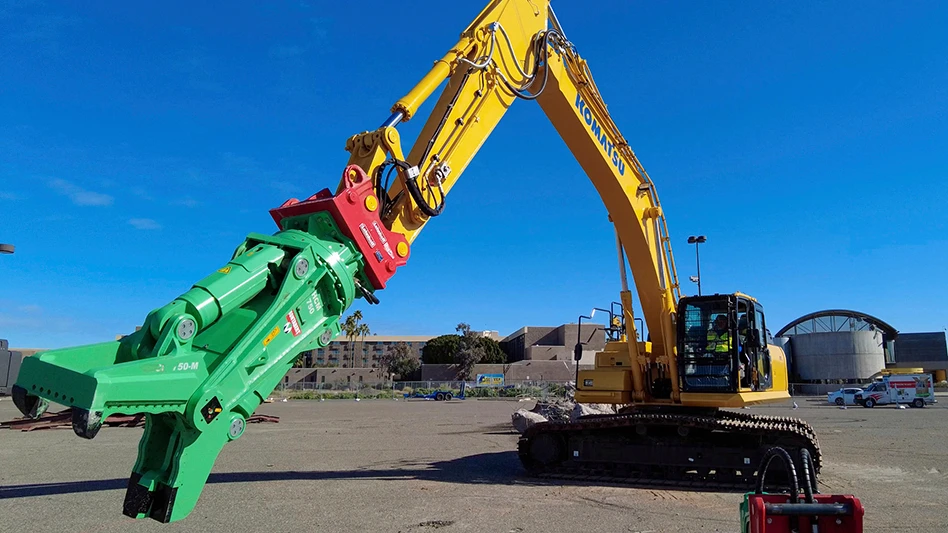
Photo courtesy of Volvo Construction Equipment
The Milwaukee-based Association of Equipment Manufacturers (AEM), organizers of the ConExpo-Con/Agg trade fair, cite green building and sustainable practices and technology as one of three identifiable trends that will influence the construction sector in 2025.
“In 2025, we’ll see a rise in advanced materials like carbon-capturing concrete, recycled plastics and bio-based materials that minimize environmental impact,” AEM says in an essay published in late November.
AEM says energy-efficient designs and materials increasingly will be integrated into buildings from the start of a given project.
“Modular construction will continue to rise in popularity, as prefabricated materials reduce waste and emissions from transportation," the group says. "Construction teams can look forward to a combination of advanced materials, new energy solutions and eco-friendly designs as key contributors to sustainability.”
Aspects of the trend likely to be visible in 2025 include carbon-neutral building materials and eco-friendly concrete while jobsites increasingly will be equipped with energy-saving technology and environmentally responsible machinery, according to AEM.
The two other trends involve artificial artificial intelligence (AI) and machine learning, plus a wider presence for robotic and autonomous machinery.
"[Meanwhile], automation in construction will reach new heights by 2025 as robotics and autonomous equipment become more common on construction sites,” AEM says.
The association says autonomous bulldozers, excavators and haul trucks can reduce the need for human operators and offer “consistent, high-precision work” that can improve efficiency, reduce errors and cut costs.
AEM also predicts a greater adoption of robotics in areas that require repetitive precision such as rebar tying or welding and foresees the introduction of more wearable exoskeletons on job sites to assist workers with heavy lifting.
“The construction landscape of 2025 will be shaped by a combination of AI-driven insights, autonomous equipment and green building technology, setting new standards for productivity, safety and sustainability,” the group says.
Latest from Construction & Demolition Recycling
- Cielo investor requests annual meeting
- CDE sets up washing plant on Long Island, NY
- NWRA: NIOSH cuts a step in the wrong direction
- Ferrous price hikes could be poised to pause
- Northstar secures 15-year lease extension for asphalt shingle recycling facility
- Greenwave asks for SEC filing extension
- Construction Plastics Initiative lines up projects
- ShearCore adds dealership group in Canada





